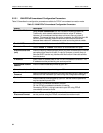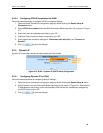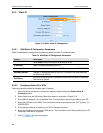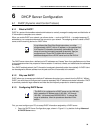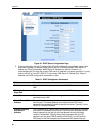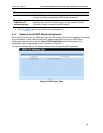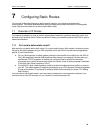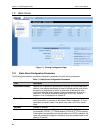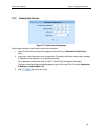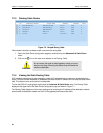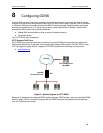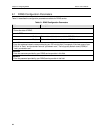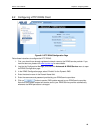
RX3141 User’s Manual Chapter 7. Configuring Static Routes
39
7
Configuring Static Routes
You can use Configuration Manager to define specific routes for your Internet and network data
communication. This chapter describes basic routing concepts and provides instructions for creating static
routes. Note that most users do not need to define static routes.
7.1 Overview of IP Routes
The essential challenge of a router is: when it receives data intended for a particular destination, which next
device should it send that data to? When you define IP routes, you provide the rules that the RX3141 uses to
make these decisions.
7.1.1 Do I need to define static routes?
Most users do not need to define static routes. On a typical small home or office network, the existing routes
that set up the default gateways for your LAN computers and for the RX3141 provide the most appropriate
path for all your Internet traffic.
f On your LAN computers, a default gateway directs all Internet traffic to the LAN port on the RX3141.
Your LAN computers know their default gateway either because you assigned it to them when you
modified their TCP/IP properties, or because you configured them to receive the information
dynamically from a server whenever they access the Internet. (Each of these processes is described
in the Quick Start Guide instructions, Part 2.)
f On the RX3141 itself, a default gateway is defined to direct all outbound Internet traffic to a router at
your ISP. This default gateway is assigned automatically by your ISP whenever the device negotiates
an Internet connection. (The process for adding a default route is described in section 7.2.2 Adding
Static Routes.)
You may need to define static routes if your home setup includes two or more networks or subnets, if you
connect to two or more ISP services, or if you connect to a remote corporate LAN.




